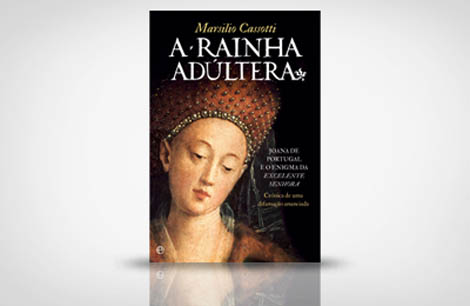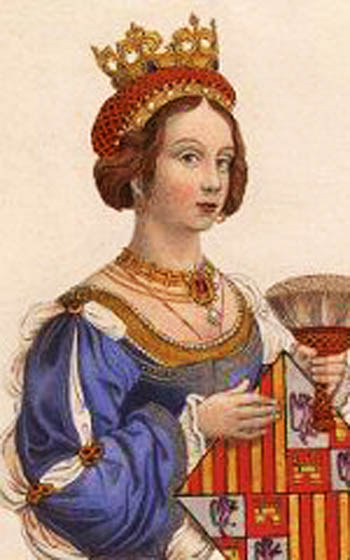 D. Joana de Avis (1439-1475), Infanta of Portugal, was Queen of Castile while wife of King Enrique IV of Castile. Despite the latter having received the nickname of “the Impotent”, the royal couple had legitimate descendants in the person of Dona Juana de Castilla.
D. Joana de Avis (1439-1475), Infanta of Portugal, was Queen of Castile while wife of King Enrique IV of Castile. Despite the latter having received the nickname of “the Impotent”, the royal couple had legitimate descendants in the person of Dona Juana de Castilla.
The dysfunctional problem that caused Henry IV's impotence is well documented either by descriptions of urological examinations carried out during the monarch's lifetime, or by analyzes of his mortal remains carried out in the XNUMXth century. The King of Castile was unable to consummate copulation, prevented by a physical constraint in the functional anatomy of his penis.
But the need to secure legitimate descent, and thus continue their lineage in the crown of Castile, led to “exceptional” measures being taken. There was a previous indication inscribed in the “Law of Departures” by Alfonso X of Castile the Wise, which authorized the practice in the kings of Castile of “the skills to be done” to solve their reproductive problems, but always with respect for such natural law. as proclaimed by the Catholic Church.
And what “masters” were these? Enrique IV resorted to the “conception without copulation” (sine concubito) to impregnate Joana de Portugal. For this, he called in a Jewish physicist (doctor), a specialist who will have performed this “mastery” on the monarch couple.
These practices were prohibited by the Catholic Church, but not by Jewish law. In fact, the recognition of the conception without copulation as being possible and legitimate is well documented “by the Jewish sages of antiquity, the first time in the XNUMXth century d. C., in the Babylonian Talmud” and there are precise references to this theme “in the works of Jewish rabbis of the XNUMXth and XNUMXth centuries in the Mediterranean area”.
 It is written by the Argentine historian Marsilio Cassoti, in his most recent book “A Rainha Adultera”, recently published among us by A Esfera dos Livros. In this book, at least one source is also indicated that documents the practice of artificial insemination or, we could say more precisely, assisted insemination, in an Arabic text dated 1322, which tells the story of an inhabitant of the ancient kingdom of Nubia having performed that “technique” to inseminate mares with semen from horses from other stables.
It is written by the Argentine historian Marsilio Cassoti, in his most recent book “A Rainha Adultera”, recently published among us by A Esfera dos Livros. In this book, at least one source is also indicated that documents the practice of artificial insemination or, we could say more precisely, assisted insemination, in an Arabic text dated 1322, which tells the story of an inhabitant of the ancient kingdom of Nubia having performed that “technique” to inseminate mares with semen from horses from other stables.
In other words, the practice of artificial insemination was known in antiquity and practiced at least in veterinary medicine.
In this book, translated by António Júnior, the historian presents, fact after fact, argument after argument, documenting in well-identified historical sources the thesis that Joana de Portugal was artificially inseminated, or at least assisted, with semen from Enrique IV of Castile, through a “mastery” probably led by the Jewish physicist Yusef ben Yahia.
The insemination was successful and on February 28, 1462, D. Juana de Castile was born, legitimized by Pope Pius II as a descendant of Enrique IV of Castile. Moreover, sanctity writes that Dona Joana conceived a “virgin”: “They said that she had been married with the best auspices and that she was fertilized without losing her virginity. There were those who claimed that the semen spilled at the entrance had penetrated into the most hidden places”.
This is what the investigation carried out by Cassotti discovered, dissolving a centuries-old enigma, and which adds a new historical perspective on this birth until now considered the result of an adulterous relationship of Dona Joana de Portugal. In fact, a brief internet search indicates that Dona Joana was removed from the court and repudiated by Enrique IV of Castile for her extramarital affairs. Hence the title “The Adulterous Queen”.
Cassotti knew, before starting the biography of Dona Joana, “that she had to face a very difficult political circumstance, in which, as today, manipulation was used to achieve ends determined by an interested minority” in crown of Castile.
With this book, and over 24 duly annotated chapters, the author intended to "highlight the existence of a female and Portuguese character, little known, who had the intelligence, audacity and courage to want to extend the influence of Portugal over Spain", at the height of the Discoveries.
Also according to Cassotti, both artificial insemination and sexual dysfunction are indisputably documented “in a diary of German physician Hieronimus Munzer, written after traveling through Spain and Portugal, between 1494 and 1495, in which he describes, according to Maganto Pavón (a Spanish urologist current) a rudimentary artificial insemination practice”.
In the context of an Iberia on the eve of discovering new worlds, Cassotti introduces us to what would have been the first artificial insemination carried out in European courts, and restores justice in a centuries-old defamation.
The next step would be the comparative genetic analysis of Dona Juana and Enrique IV, based on their mortal remains, to confirm that the first is the biological daughter of the monarch. Today's forensic archaeogenetics could thus, in an interdisciplinary exercise, strengthen and corroborate historical documentary sources.
But, unfortunately, both the remains of mother and daughter disappeared in unfortunate demolitions of the buildings in which they were buried.
bibliographic sheet
Title: The Adulterous Queen
Author: Marsilio Cassotti
Translation: António Júnior
Publisher: The Sphere of Books
Collection: Biographical History
Number of pages:531
Format: 16 x 23,5
Binding: Broach
1nd edition: October 2012
ISBN: 978-989-626-405-5
Author Antonio Piedade
(Science in the Regional Press – Ciência Viva)


















Comments